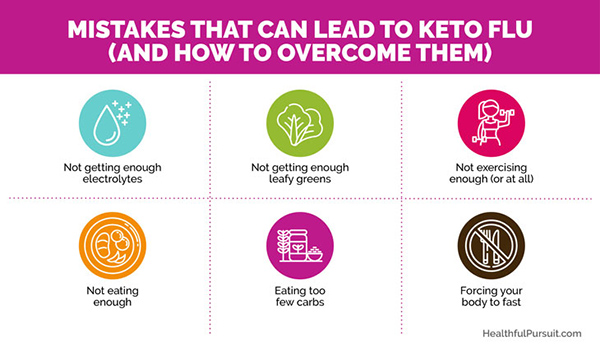Struggling with the keto flu? Don’t worry, we’ve got you covered. In this article, you’ll discover effective ways to beat the keto flu and make your transition to the ketogenic diet a breeze. From proper hydration and electrolyte balance to incorporating nutritious foods into your meals, we’ll share practical tips and tricks to help you overcome the unpleasant symptoms of the keto flu. Say goodbye to fatigue, headaches, and cravings, and get ready to enjoy the benefits of the keto lifestyle. So, let’s dive in and conquer the keto flu together!
Introduction
What is the Keto Flu?
The Keto Flu, also known as the “carb flu,” is a common set of symptoms that many people experience when transitioning into the Ketogenic diet. It typically occurs within the first few days or weeks of starting the diet and is the body’s response to the sudden reduction in carbohydrates. While not everyone experiences the Keto Flu, it is important to be aware of its symptoms and how to manage them effectively.
Causes of the Keto Flu
The Keto Flu is primarily caused by the body’s adjustment to the Ketogenic diet, which requires a significant reduction in carbohydrate intake. When you consume fewer carbohydrates, your body begins to burn fat for energy instead. During this transition, your body goes through various biochemical adaptations, which can result in symptoms commonly associated with the Keto Flu.
Symptoms of the Keto Flu
The symptoms of the Keto Flu can vary from person to person, but common symptoms include fatigue, headaches, dizziness, nausea, irritability, brain fog, muscle soreness, and insomnia. These symptoms may sound daunting, but don’t worry – there are ways to manage them effectively and make your transition into ketosis smoother.
Hydration
Importance of Hydration
Staying properly hydrated is crucial, especially when you are experiencing the Keto Flu. It helps to flush out toxins, supports your body’s natural detoxification processes, and improves overall well-being. Dehydration can exacerbate the symptoms of the Keto Flu, so it is essential to prioritize hydration during this time.
Increasing Water Intake
To combat dehydration, it is recommended to increase your water intake significantly. Aim to drink at least eight glasses (2 liters) of water per day, and even more if you are physically active or live in a hot climate. Remember, water is a vital component for numerous bodily functions, and keeping yourself properly hydrated will aid in your Keto Flu recovery.
Adding Electrolytes to Water
In addition to water, replenishing electrolytes is crucial during the Keto Flu. Electrolytes such as potassium, sodium, and magnesium support proper nerve and muscle function, help maintain fluid balance, and assist with energy production. You can add electrolytes to your water by using electrolyte powders or drops specifically designed for the Keto diet.
Drinking Broth or Bone Broth
Another way to boost your electrolyte intake is by consuming broth or bone broth. These savory liquids not only provide essential electrolytes but also offer other beneficial nutrients. Broth and bone broth are particularly rich in sodium, which helps to replenish electrolytes and maintain proper hydration levels in your body. Incorporating these into your diet can greatly alleviate the symptoms of the Keto Flu.
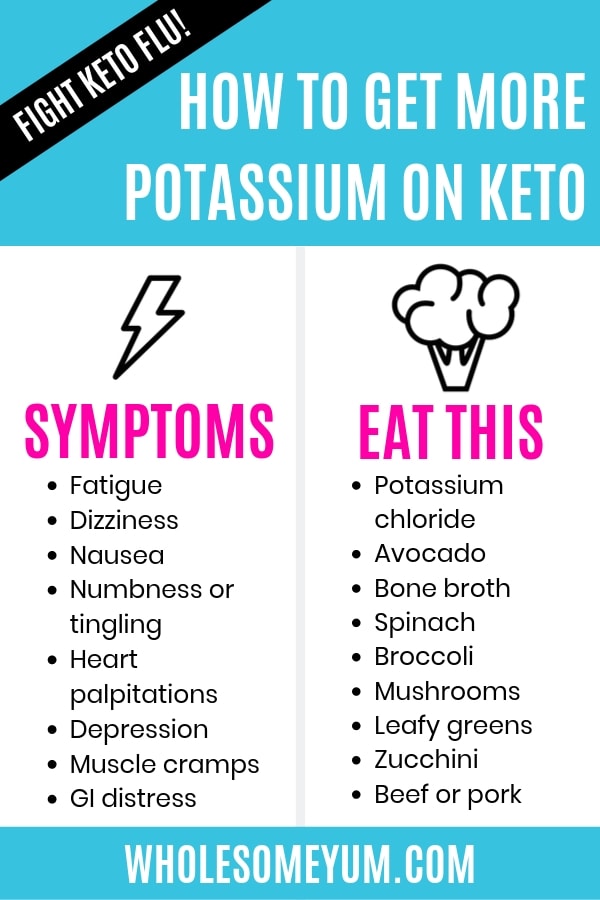
Balanced Macronutrients
Importance of Balanced Macronutrients
Maintaining a balanced macronutrient intake is vital for a healthy and successful Keto journey. It ensures that your body receives the necessary nutrients and energy to adapt to a low-carbohydrate, high-fat diet. Balancing macronutrients helps to minimize the severity of the Keto Flu symptoms and supports overall well-being.
Including Healthy Fats
One of the key components of the Ketogenic diet is embracing healthy fats. Healthy fats are essential for energy production, hormone regulation, and brain function. Incorporating sources of healthy fats such as avocados, olive oil, nuts, and seeds into your meals can help reduce the severity of symptoms associated with the Keto Flu.
Consuming Adequate Protein
Protein is another crucial macronutrient that plays a critical role in the Keto Flu recovery process. Adequate protein intake supports muscle repair, helps maintain a healthy immune system, and provides a feeling of satiety. Including sources of high-quality protein such as lean meats, fish, eggs, and dairy products in your meals will aid in your recovery and ease the symptoms of the Keto Flu.
Managing Carbohydrate Intake
While the Ketogenic diet requires a significant reduction in carbohydrate intake, it is important to carefully manage your carbohydrate consumption, especially during the Keto Flu. Gradually decreasing carbohydrate intake over time instead of eliminating them abruptly can help minimize the severity of symptoms. Choosing complex carbohydrates such as vegetables, nuts, and seeds instead of refined carbohydrates will also support your recovery.
Supplementing with Electrolytes
Electrolyte Imbalance in Keto Flu
The Keto Flu often involves an electrolyte imbalance, which can contribute to symptoms such as muscle cramps and fatigue. Since your body excretes more electrolytes, including sodium, potassium, and magnesium, when you are in a state of ketosis, it is crucial to replenish them through proper supplementation.
Types of Electrolytes
There are several important electrolytes that you need to pay attention to during the Keto Flu. Sodium is responsible for maintaining fluid balance, potassium helps regulate muscle contractions and nerve function, and magnesium plays a role in muscle and nerve function, blood sugar regulation, and energy production. Ensuring you have sufficient levels of these electrolytes will significantly reduce the severity of your symptoms.
Best Food Sources of Electrolytes
In addition to supplementation, it is beneficial to consume foods that are naturally rich in electrolytes. Foods such as leafy greens, avocados, nuts, seeds, and bone broth are excellent sources of the essential electrolytes needed for Keto Flu recovery. Incorporating these foods into your diet will provide an additional boost to your electrolyte levels.
Electrolyte Supplements
If you find it challenging to meet your electrolyte needs through food alone, electrolyte supplements can be a convenient option. There are various electrolyte powders, capsules, and drinks available that are specifically tailored for the Keto diet. It is important to choose high-quality supplements from reputable brands to ensure you are getting the necessary electrolyte balance for optimal recovery.
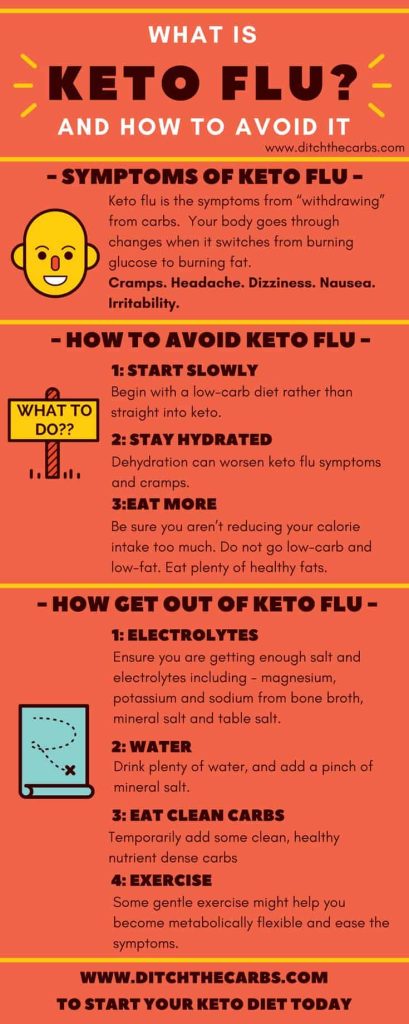
Adequate Sleep and Rest
Importance of Sleep in Keto Flu Recovery
Getting adequate sleep and rest is crucial for the body to recover from the Keto Flu. Quality sleep allows your body to repair tissues, regulate hormones, and strengthen the immune system. It also plays a vital role in managing stress, which can exacerbate the symptoms of the Keto Flu.
Creating a Sleep Routine
Establishing a consistent sleep routine can greatly enhance your recovery process. Aim for a regular sleep schedule by going to bed and waking up at the same time each day. This helps regulate your body’s internal clock and improves the quality of your sleep. Creating a relaxing bedtime routine, such as taking a warm bath or practicing relaxation techniques, can also promote better sleep.
Avoiding Stimulants and Electronics Before Bed
To optimize your sleep during the Keto Flu recovery, it is essential to avoid stimulants and electronics before bedtime. Caffeine and other stimulants can interfere with sleep quality and make it more difficult for your body to rest and recover. Additionally, the blue light emitted by electronic devices can affect your sleep hormone production. Instead, opt for calming activities such as reading a book or practicing meditation before bed.
Physical Activity
Benefits of Exercise During Keto Flu
While it may be tempting to avoid physical activity during the Keto Flu, incorporating light exercise into your routine can actually be beneficial. Exercise helps to improve blood flow, boost energy levels, and enhance mood. It can also aid in speeding up the transition into ketosis and reducing the duration of the Keto Flu.
Choosing Low-Impact Activities
During the Keto Flu, it is important to choose low-impact activities that are gentle on your body. Walking, cycling, yoga, swimming, and stretching are excellent options that allow you to maintain an active lifestyle while minimizing the risk of injury or excessive fatigue. Gradually increase the duration and intensity of your workouts as your body adjusts to the Ketogenic diet.
Gradually Increasing Intensity
As you progress through the Keto Flu recovery, you can gradually increase the intensity of your workouts. This will help improve your overall fitness, increase fat burning, and enhance your body’s ability to adapt to ketosis. However, always listen to your body and rest when needed. Pushing yourself too hard can lead to prolonged recovery times and hinder your progress.
Listening to Your Body
It is essential to listen to your body’s signals during the Keto Flu recovery. If you feel overly fatigued or experience excessive discomfort during exercise, it may be a sign that you need to rest. Remember, your body is going through significant changes during this time, and it is important to give it the rest and recovery it needs to adapt to ketosis fully.
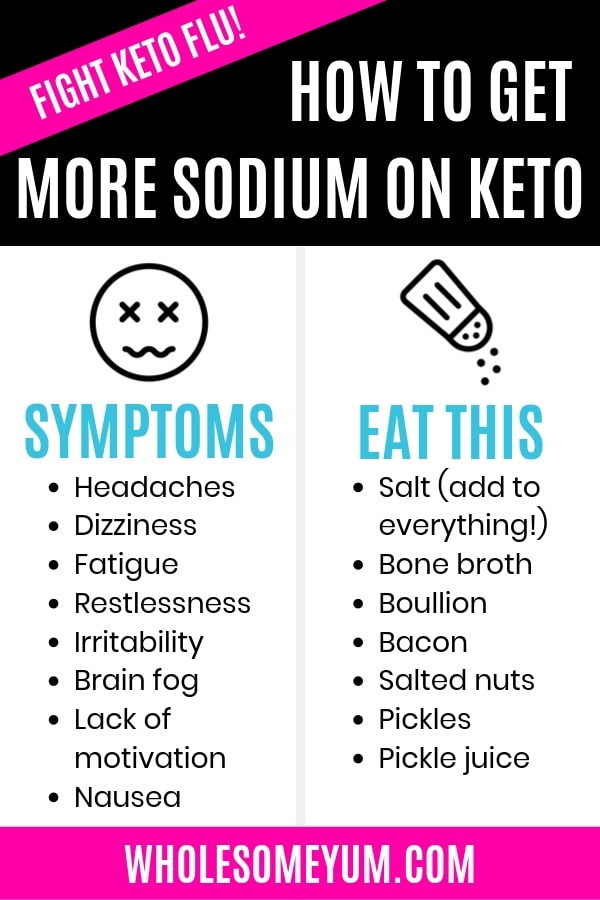
Stress Management
Impact of Stress on Keto Flu
Stress can significantly impact your Keto Flu recovery. When you are stressed, your body releases cortisol, a hormone that can interfere with ketone production and prolong the duration of the Keto Flu. It is crucial to manage and reduce stress levels to alleviate symptoms and support your overall well-being.
Implementing Stress-Reducing Techniques
Incorporating stress-reducing techniques into your daily routine can be highly beneficial during the Keto Flu recovery. Deep breathing exercises, meditation, and yoga are excellent practices that promote relaxation and help lower cortisol levels. Additionally, engaging in hobbies, spending time in nature, and connecting with loved ones can also have a positive impact on your stress levels.
Meditation and Deep Breathing
Meditation and deep breathing exercises are powerful tools for reducing stress and promoting a sense of calm. Taking a few moments each day to sit in a quiet space, focus on your breath, and clear your mind can help alleviate the symptoms of the Keto Flu. There are various meditation apps and guided breathing exercises available that can assist you in incorporating these practices into your routine.
Engaging in Relaxation Activities
Engaging in activities that bring you joy and relaxation can significantly reduce stress levels during the Keto Flu recovery. Whether it’s reading a book, taking a bath, listening to music, or practicing a hobby, finding time for activities that help you unwind is important for your overall well-being. Make self-care a priority to support your body’s healing process.
Intermittent Fasting
Beneficial Effects of Intermittent Fasting
Intermittent fasting is a popular eating pattern that can have several beneficial effects on Keto Flu recovery. It helps to accelerate ketosis, increase fat burning, and promote metabolic flexibility. When combined with the Ketogenic diet, intermittent fasting can enhance the effectiveness of the Keto Flu recovery and lead to faster and more sustainable results.
Gradually Introducing Fasting
If you are new to intermittent fasting, it is essential to gradually introduce fasting periods into your routine. Start with shorter fasting windows, such as 12-14 hours, and gradually increase the duration over time. This allows your body to adapt to fasting and minimizes the risk of experiencing severe symptoms. Listen to your body and adjust the fasting duration based on your comfort level.
Choosing an Appropriate Fasting Window
Finding the fasting window that works best for your body is important during the Keto Flu recovery. Some individuals prefer a daily fasting window, such as 16:8 (16 hours of fasting and an 8-hour eating window), while others may opt for alternate-day fasting or longer periods without food. Experiment with different fasting schedules and assess how your body responds before settling into a routine that suits you best.
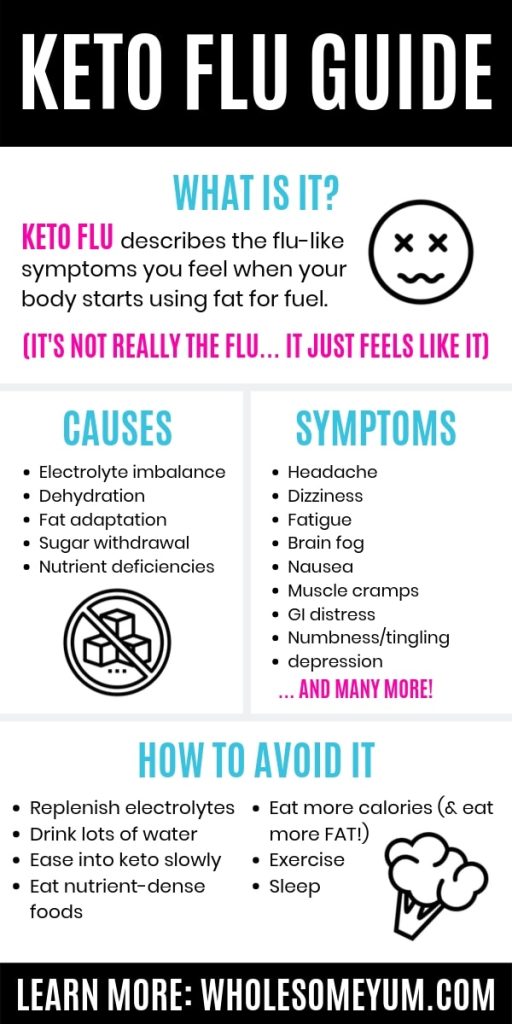
Gradual Transition into Ketosis
Importance of Gradual Transition
Gradually transitioning into ketosis can help reduce the severity and duration of the Keto Flu. Abruptly restricting carbohydrates can lead to a more intense flu-like experience, whereas a gradual reduction in carbohydrate intake allows your body to adapt more smoothly. Taking this approach will give your body the time it needs to shift its energy source from carbohydrates to fat.
Reducing Carbohydrate Intake Slowly
Instead of completely eliminating carbohydrates overnight, reduce your carbohydrate intake gradually. Start by cutting out sugary snacks and refined carbohydrates, and focus on consuming whole, unprocessed foods. Slowly decrease your carb intake each day or week until you reach your desired target. This gradual reduction will help ease the transition for your body and minimize the symptoms you experience.
Increasing Fat Intake Gradually
Simultaneously with reducing carbohydrate intake, it is important to gradually increase your fat intake to compensate for the reduced energy from carbohydrates. Introduce healthy fats such as avocados, coconut oil, olive oil, and nuts into your meals. Gradually increase portion sizes and experiment with different fat sources to find what works best for you. This balanced approach will support your Keto Flu recovery and ensure that your body has enough energy to function optimally.
Consulting a Healthcare Professional
When to Seek Medical Advice
While the Keto Flu is generally a temporary and manageable condition, there may be instances where seeking medical advice is necessary. If your symptoms persist or worsen significantly despite implementing the strategies mentioned above, it is important to consult a healthcare professional. They will be able to assess your unique situation and provide personalized recommendations or interventions to support your Keto Flu recovery.
Getting Blood Tests
If you are starting the Ketogenic diet or experiencing prolonged symptoms of the Keto Flu, it can be beneficial to get blood tests done to assess your nutrient levels. Blood tests can provide insights into your electrolyte balance, vitamin and mineral deficiencies, and overall health status. Armed with this information, you can tailor your dietary choices and supplementation regimen to better support your Keto Flu recovery.
Customizing the Keto Diet
Every individual’s nutritional needs and tolerances are different. Consulting a healthcare professional, such as a registered dietitian or nutritionist, can help you customize the Ketogenic diet to meet your specific requirements. They can provide guidance on macronutrient ratios, food choices, supplements, and overall diet structure. Working with a professional ensures that you are on the right track and supports a successful Keto Flu recovery.
In summary, the Keto Flu is a common phenomenon that many people experience when transitioning to the Ketogenic diet. By following strategies such as staying hydrated, balancing macronutrients, supplementing with electrolytes, prioritizing adequate sleep and rest, engaging in physical activity, managing stress, implementing intermittent fasting, gradually transitioning into ketosis, and seeking professional guidance, you can successfully overcome the Keto Flu and embark on a successful and sustainable Keto journey. Remember to listen to your body, be patient with the process, and celebrate each step towards achieving your health and wellness goals.
